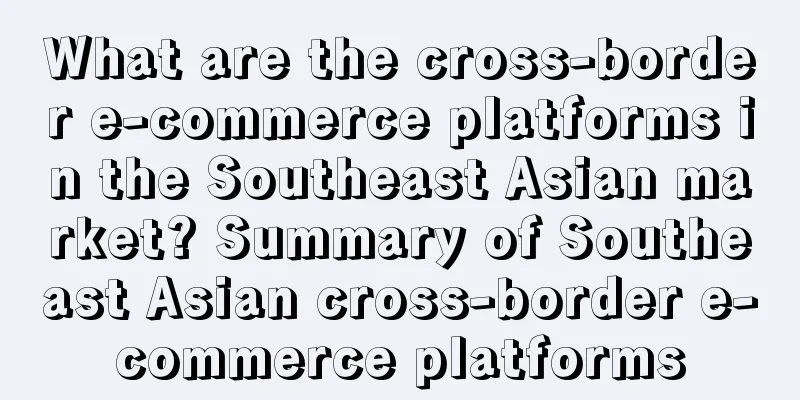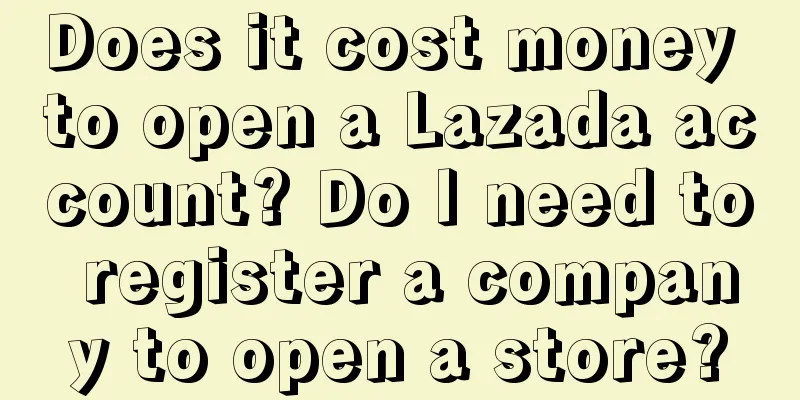If you want to double your private domain conversion rate, you must know these 8 "psychological effects"

Why do some companies’ private domain sales continue to grow and their user repurchase rates continue to rise? But you seem to have done everything in your private domain, but the results are disappointing. Maybe the difference is not in your product, but in the "details". A small detail can improve the user experience inadvertently, and it is the key to placing an order. We can refer to common marketing psychology and learn how to polish these "details" in private domain scenarios . Below are 8 common psychological effects to provide you with some ideas for operating your private domain. 01 Anchoring EffectThe anchoring effect refers to the fact that when we make decisions, we are influenced by the first information we get, which leads to biased judgments on subsequent information. This is common in marketing activities, such as during the Double 11 period, when merchants "first raise prices and then lower prices", using high prices as anchors to make users feel that the prices are very affordable. In private domain operations, brands must also be good at setting anchors so that users have a reference in their minds and amplify product value or price advantages. For example: when promoting products in a community, you can put a "community exclusive price" label on it, so that users will naturally think that the community's purchasing channel is the most cost-effective, thereby promoting order conversions and making users feel that they have "made a profit." 02 Peak-End RuleThe Peak-End Rule states that consumers are more likely to remember the climax and ending of an experience rather than the details of the entire experience. For example, IKEA's "1 yuan ice cream cone" is a classic example of the peak-end rule. IKEA sells delicious ice cream cones for only 1 yuan at the exit after shopping, giving users an unexpected surprise and increasing their favorability towards the brand. There are two ways to create a peak-end experience in the private domain:
03 Anticipation EffectThe expectation effect refers to the fact that consumers' expected results of a certain behavior or event will affect their behavior and decision-making. In marketing, the expectation effect is often used to influence consumers' purchasing behavior and brand loyalty. Unlike the Peak-End Rule, which focuses more on a one-time or short-term consumer experience, the expectation effect focuses more on the long term and requires brands to have a more detailed understanding of consumers. In private domain scenarios, it is more suitable to naturally provide consumers with "beyond expectations" services. For example: Maternal and infant brands can learn about babies’ birthdays during daily interactions with consumers or through WeChat Moments, and send birthday wishes or small gifts to the babies. At this time, users will have an emotional experience that exceeds their expectations, which will strengthen their brand loyalty and encourage repeat purchases. 04 Scarcity PsychologyScarcity psychology refers to the fact that when people face the scarcity of certain items, resources or time, they will feel a stronger need and desire, which may even affect their decision-making and behavior. Taking advantage of the scarcity psychology is also a common sales method for brands. They limit the quantity, time and other factors of product purchases, and stimulate users to place orders through means such as "rush buying" and "flash sales". In various sales links in the private domain, such as mini-programs, communities, and Moments, you can also use this type of method to attract and stimulate users to place orders in a short period of time, but the premise is that the value of your products or the discounts are attractive enough. 05 Herd mentalityIn marketing, herd mentality is a very important concept because consumers are often influenced by social pressure to act like the majority when purchasing goods or services. This psychological phenomenon can be used by marketers to promote consumer purchasing behavior . For example, when many people are queuing to buy a certain product, they will think that the product or service has high value and quality, and are more likely to buy it. The same is true in the online private domain. For example, when doing promotional activities in a community, users are required to say something like "already purchased" or "already ordered" in the community . The constant flow of information on the screen can prompt many hesitant users to start placing orders. 06 Cocktail Party EffectThe cocktail party effect refers to the phenomenon that humans can focus on specific sounds or information while ignoring other noises in a noisy environment. The effect gets its name from the fact that people at a cocktail party can still listen to interesting conversations amidst a lot of noise. Simply put, it is to accurately locate and push promotional information to specific consumers through the "thousands of faces for thousands of people" in the private domain. For example, when promoting products or activities, in scenarios such as sending group private messages to users and friends circles, you can send corresponding content according to different user tags:
In this way, consumers can notice you among a lot of promotional information, thereby increasing conversion rate. 07 Primacy EffectIn the field of marketing, the primacy effect can be understood as the fact that when consumers first come into contact with a brand or product information, they will form a stable and lasting impression of the brand or product. If this impression is good and positive, it is more likely to convert the customer into a brand consumer, which will help build trust and advocacy for the brand. In short, first impressions are crucial. This is especially critical in private domain operations. For example, when consumers first enter a private domain channel, communicate and interact for the first time, or make their first purchase , brands need to design and optimize the relevant words and processes to give users an excellent experience. 08 Opinion Reference EffectThe reference effect is a social psychology phenomenon, which means that when people face uncertain situations, they will refer to the behavior, attitudes and opinions of other people around them to determine their own behavior , which is commonly known as "word-of-mouth marketing." When consumers buy a product, they often check the sales and user reviews of the product to determine whether it is suitable for purchase. In the private domain, merchants can use welfare inducements to guide users who have placed orders to make real positive feedback within the community, which can serve as a reference for other potential users and thus promote conversion. Or you can build a content community in your private domain to give consumers more freedom to interact and discuss their experiences with the product, thereby enhancing potential customers' understanding of the product and further promoting it. The above are the 8 marketing psychological effects shared. In fact, there are many more psychological effects that can be used for reference and learning, and they can be combined and applied in actual operations. But ultimately, if companies want to improve service quality and user experience, they must consider issues from the perspective of consumers, truly be "user-centric" and capture the hearts of consumers. Author: Yan Tao |
>>: How to build an evaluation model
Recommend
How to register a wish store? What should I pay attention to when registering a wish store?
Wish is a popular mobile e-commerce platform that ...
When it comes to understanding young people’s emotions, can brands not compare to temples?
Recently, temples have gradually become a popular ...
Personal account Xiaohongshu sells sunglasses, with sales of over 2 million
Affordable sunglasses are hot-selling, distinctive...
How does Amazon contact sellers? What are the requirements for opening a store on Amazon?
Amazon is the largest cross-border e-commerce comp...
How to quickly understand an industry?
In the business world, knowing an industry inside ...
How to choose a transit warehouse on Shopee? What should I pay attention to when shipping?
Now more and more merchants have settled in Shopee...
Breaking out of the Red Ocean | Good content drives new brand growth
This article uses ten sentences and ten case studi...
Is your labeling system empty and fake? These 3 tips can help you solve your business pain points
A good labeling system is essential for refined op...
From the old man in Tianjin to the BGM of the Asian Games, what cities have taught us about marketing methodology
Recently, Internet celebrity cities have frequentl...
Car companies suffer from "traffic anxiety", are video accounts a new way out?
This article mainly discusses the digital transfor...
Keep it: The latest operation methods and strategies of WeChat public accounts in 2025
As the WeChat official account platform continues ...
Temu is busy overseas and has no time to care about domestic businesses
Temu, Pinduoduo's overseas e-commerce platform...
Amazon's local brand Hero Cosmetics was acquired
Hero Cosmetics, an acne care brand on Amazon, was ...
Can Amazon titles be exactly the same? What should I pay attention to in titles?
Friends who do e-commerce should not forget to pay...
How do Amazon China sellers send goods? How much does it cost to ship an order from Amazon?
In this process, logistics plays a vital role. For...









